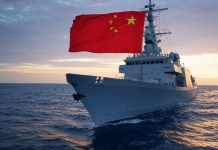Experts believe that India has missed a big opportunity in getting a strategic foothold in the island nation located in the Indian Ocean. About 48 percent of Mauritius’ total 1.3 million population is of Indian-origin.
Su-35, MiG-35, Bumerang Vehicles Among 200 Russian Weapons On Display At Aero India 2021
The agreement signed in October 2019 offers major concessions to Mauritius. While India has long enjoyed close economic, military, and cultural links with Mauritius, New Delhi has failed to sign a similar deal with the island nation.
The experts have termed the China-Mauritius FTA as a major setback for India. According to Mauritius’ foreign ministry, the country will benefit from immediate duty free access on the Chinese market on some 7,504 tariff lines while 723 Mauritius products will be made duty free over the next seven years.
According to the deal, the two countries will remove restrictions from service sectors, including financial services, telecommunications, information and communications technology, professional services, construction, and health services.
China’s first trade pact with an African country has resulted in Beijing boasting about it as an extension of its “comprehensive strategic partnership”. With this, Beijing’s number of FTAs with bilateral partners and regional blocs has reached 18. This might just be the beginning of China’s way into the African market. China’s previous FTA with the island nation, the Maldives, in the Indian Ocean Region was not so smooth.
Congratulations @PKJugnauth on your electoral victory.
We have worked closely together to strengthen fraternal relations and development partnership between India and Mauritius.
I look forward to speaking with you soon and to continuing our engagement. @MauritiusPM pic.twitter.com/0bpW3hWKnF
— Narendra Modi (@narendramodi) November 9, 2019
Meanwhile, India’s ‘Neighborhood First’ policy has taken a hit as New Delhi has failed to complete India-Mauritius Comprehensive Economic Cooperation and Partnership Agreement. Experts have pointed out that India may lose its economic and military influence over Mauritius now.
Currently, Indian warships guard Mauritius’ exclusive economic zone (EEZ) but considering China’s history of engaging with small countries, especially in the Indian Ocean Region, Beijing may attempt to ramp up the presence of its Navy in Mauritius’ waters. This would pose a direct challenge to the Indian Navy’s dominance in the region.
Analysts point out that Mauritius is “at the heart” of India’s policy in the wider Indian Ocean Region for its strategic value. But considering India’s history in signing the FTAs, it is not surprising that China already has an effective FTA with the island nation while India continues to struggle. According to media reports, till late 2020, “the Mauritius-India Comprehensive Economic Cooperation and Partnership Agreement (CECPA) was close to completion”.

It has been understood that New Delhi’s failure to finalize an FTA with Port Louis is a failure to cater to Mauritius’ economic expectations. However, the fact of the matter is that China has a GDP almost five times as big as India, hence making it difficult for New Delhi to compete.
Analysts have underlined that Prime Minister Narendra Modi has given importance to cultivating ties with Mauritius since he assumed office in 2014. It is pertinent to mention that Indians had arrived on the island nation during colonial times, and now form the largest ethnic group. About 48 percent of the population is of Indian-origin.
Then-Mauritius Prime Minister Navinchandra Ramgoolam was the only non-SAARC (South Asian Association for Regional Cooperation) country head who was invited for the swearing-in ceremony of Modi in 2014. Modi had first spoken of India’s vision of SAGAR – Security and Growth for All in the Region – in Mauritius in 2015.
Mission SAGAR aims to provide humanitarian help to maritime neighbors and to counter piracy in the Indian Ocean. Since half of the world’s container ships, one-third of the world’s bulk cargo traffic, and two-thirds of the world’s oil shipments pass through the Indian Ocean, the region becomes an important sea route.
China has been trying to increase its presence in the Indian Ocean by deploying naval ships and Unmanned Underwater Vehicles (UUV), which can also be used for tracking submarines and destroying mines apart from being used for scientific research.
Follow EurAsian Times on Google




